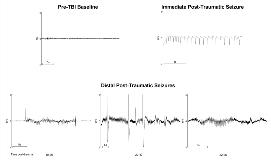A Novel Model of Post-Traumatic Epilepsy and the Characterization of Post-Traumatic Hippocampal Oxygenation
Abstract number :
1.005
Submission category :
1. Basic Mechanisms / 1A. Epileptogenesis of acquired epilepsies
Year :
2018
Submission ID :
500958
Source :
www.aesnet.org
Presentation date :
12/1/2018 6:00:00 PM
Published date :
Nov 5, 2018, 18:00 PM
Authors :
Haris Malik, University of Calgary; Marshal D. Wolff, University of Calgary; Richelle Mychasiuk, University of Calgary; and Gordon C. Teskey, University of Calgary
Rationale: Traumatic brain injuries (TBIs) can lead to an increased risk of developing comorbidities such as epilepsy which is characterized by recurrent seizures. Such post-traumatic epilepsies (PTEs) are referred to as “acquired” and people with acquired epilepsies often have seizures that are not completely controlled, despite multiple trials of anti-epileptic medications. The biological processes that occur after a brain injury, and how these processes contribute to epileptogenesis are poorly understood. Efforts to study this trauma-induced epileptic process have been hampered by the lack of ethologically relevant models.It has been previously determined that following the cessation of brief focal seizures, a long-lasting severe hypoperfusion/ hypoxic event occurs in the brain regions involved in the seizure, and that seizure severity and post-seizure outcomes are associated with this restriction of blood flow and reduction in oxygenation. Interestingly, it has also been reported that mild traumatic brain injuries (mTBIs) induce a hypoxic environment in the brain following injury through reductions in cerebral blood flow.We hypothesize that posttraumatic hypoxia results from post-traumatic seizures, is associated with increased risk for PTE, and may provide a mechanistic target for the prevention of post-traumatic seizures. Methods: A mild traumatic brain injury was delivered to male Wistar rats (n=14) using a lateral impact device which produces horizontal acceleration/ rotation and closely mimics the biomechanics commonly observed in human TBI. Hippocampal EEG and oxygenation was monitored before and immediately following the trauma. Rats were then transferred to a 24/7 video-EEG monitoring unit where hippocampal EEG was monitored continuously for 8 to 10 weeks. Results: Following mTBI, animals reliably experience immediate, focal, post-traumatic, electrographic seizures which are accompanied by long-lasting, severe hypoxic episodes (10/14 animals) that we have observed within the ventral hippocampus, but not the dorsal hippocampus or the cortex. Moreover, 24/7 video-EEG monitoring revealed multiple episodes of epileptiform and seizure activity in the weeks following trauma. Conclusions: We’ve demonstrated that the lateral impact model of mild TBI results in immediate post-traumatic seizures and epileptiform EEG activity in the weeks following trauma, a finding that has not been successfully shown before using other models of concussion. We have also shown that these seizures are accompanied by long-lasting, severe hypoxic episodes.This minimally invasive injury requires little to no recovery period, allowing for the interrogation of injury pathophysiology immediately after trauma permitting us to track epileptogenic processes from the onset of injury to the manifestation of epilepsy.We propose that repeated occurrence of these post-traumatic, post-ictal hypoxic episodes contribute to post-traumatic deficits and comorbidities and may also serve as the mechanism by which immediate and early seizures transition to post-traumatic epilepsy. Thus, post-traumatic oxygenation may serve as a biomarker or target for the treatment of PTE. Funding: CIHR and ACHF

.tmb-.jpg?Culture=en&sfvrsn=72d5d933_0)